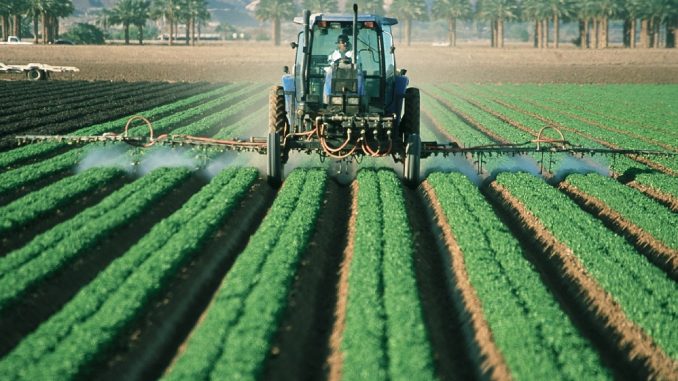
In Florida, a robot called Harv scuttles frantically around the fruit fields, scooping up strawberries with his 16 camera-guided fingers. He picks five strawberries per second, a furious pace by anyone’s standards. But then he needs to prove his worth; it won’t be long before a horde of competitors arrive on the scene.
In the neighboring state of Georgia, scientists have built a robot called Tarzan, which swings above the crops and plucks fruit from their branches. On the other side of the US, engineers are building an apple-picker with 12 arms, expected to be ready in three years. Across the Atlantic, British scientists have programmed a robot to burrow into the foliage and pluck out berries.
The rise of these fruit-picking robots is perhaps the final frontier for precision agriculture, a blanket term that describes the use of technology to optimize farm work. Robots and smart machines already spray crops, irrigate fields and manage livestock, but they haven’t been gentle enough to handle the harvesting of soft fruits.
Now things are changing. Advances in end-of-arm tooling technologies are giving robots more subtle grips, allowing them to pick softer fruits. Over the four years to 2022, analysts expect the robotic fruit-picker market to grow by 98%.
It’s just the latest bit of good news for a sector that continues to grow rapidly, fueled by investors who see vast untapped potential in the staunchly traditional farming industry. Nearly $17 billion was pumped into agricultural technology projects in 2018, allowing engineers to make their products even smarter.
To cite one example, a company called FieldView, which uses big data to gauge crop performance, has built a mapping solution that zooms in on underperforming parts of the field, using images from multiple cameras. But this is just scratching the surface; everywhere, technologies such as machine learning and AI are enabling robots to make more sophisticated judgment calls, whether they’re working with plants or animals.
Out in the fields, startups such as Blue River, acquired by John Deere in 2017, have built robots equipped with “deep learning” which can distinguish between ailing and healthy crops. Meanwhile, in the animal sheds, farmers can equip their cows with transmitters that tell them whenever an animal is ready for insemination.
Of course, there’s plenty of resentment from the humans who’ve been doing these jobs for decades. Seeing their livelihood under threat, they complain that a robot will never be up to the job of replacing them.
In Florida’s fruit fields, pickers claim that Harv will never be able to filter out the rotten fruit like them. Their counterparts in the livestock farms say they can detect a sick member of the herd by peering into its eyes – something no technology could ever achieve, of course.
Wider benefits
But these critics are missing the point. Instead of viewing the robots as a threat, farmers and consumers alike should start thinking of them as allies in their battle to feed the planet.
Scientists predict the global population will grow to 9.8 billion by 2050, an increase of 36% in just 30 years. The majority of this growth will take place in Africa and Asia, where famine and malnutrition are already commonplace. Without a major increase in farm output, we might only have enough food for half this population.
But a global labor shortage, particularly acute in seasonal occupations such as fruit-picking, means farmers are struggling to maintain their current output, never mind raise it. In the U.S., the shortage is so acute that lawmakers are pushing to relax the visa system as a pitch to immigrants. In Britain, farmers worry about their survival when (or if) Brexit happens.
To compound matters, traditional farming methods have created a vicious environmental circle, fueling the climate change that’s eroding their fields. It’s estimated that around half the world’s greenhouse gases come from the food system, much of them generated by the excessive use of water and chemicals. The effects are particularly evident in Asia’s rice belt, where climate change from outdated irrigation techniques is pushing up sea levels and eating into the paddies, inch by precious inch.
Precision agriculture can solve both the human and environmental challenges. On one hand, smart robots are seriously labor-efficient; they can work round the clock, they never get sick, and they can cover far greater distances than a human. Harv the fruit-picker combs eight acres in a single day, but this isn’t even that impressive when measured against his rivals. Another Floridian fruit-picker is said to cover 25 acres in a single day, and can replace around 30 workers at a stroke.
Then, there are the environmental benefits. Soil sensors powered by the internet of things, telling growers exactly when their crop needs irrigating, could transform the way Asia’s paddies are cultivated. So-called ‘variable-rate’ technologies, which limit the use of chemicals to the plants that actually need them, offer even greater potential. Blue River says its weed killer bots, which are programmed to avoid spraying healthy plants, can reduce herbicide use by 90%.
None of this, of course, will stop some farmers complaining. They’ll continue to worry about their jobs and suggest robots will never be good enough to replace them. But, instead of fearing the likes of Harv, the global farming community needs to start embracing them. Together, they’ve got an almighty challenge to overcome.


Leave a Reply